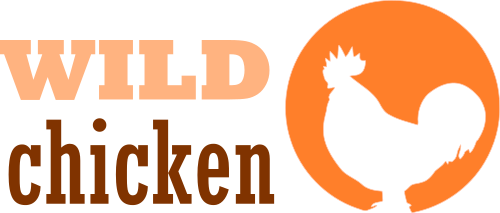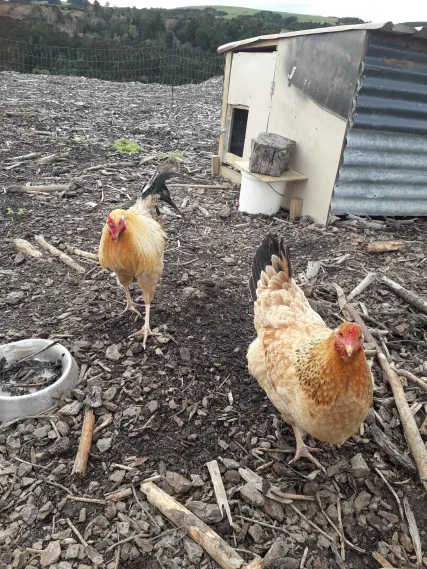March 2025
The idea of these articles is to document the New Zealand Forager Fowl project so that the NZFF breeders of the future may learn something about the history of the breed, also maybe breeders with similar projects may be interested to see what I’m doing with this project. These will not be laid out like a proper article for the most part. Who knows, maybe one day I will publish these in book form?
The NZFF is a breed which i am developing in New Zealand the goal is to produce a bird that thrives in the NZ environment as we currently don’t have any breeds that originated here, they are supposed to be an excellent forager, a decent egg layer, a reliable mother, and an all-round good chicken, they should be able to survive.
I started with a flock of mongrels that we had for egg production, so to be quite honest i’m not entirely sure what’s in them, but i do know that a got a leghorn rooster to breed to the mongrel flock, and that hylines and welsummers went into them, but otherwise i have no idea as i wasn’t picking my breeders based on breed, but based on the genes they carried.
This project probably started around 2020/2021, however the original flock has been around for a long time.
When i finally found a hen that i was pretty happy with from the original flock – she is a buff Colombian in colour, she had the best type of all my hens, yellow legs, red ear lobes, and a neat pea type comb and small wattles, and continued to lay well even at 5 years old, she also moults really fast quite late in the season (April) – i bred her to a crele cock bird (he might have been a leghorn, but likely just a mongrel) – he had a massive tail, yellow legs, white earlobes, a big single comb and wattles to match, and his type was close enough but not as good as the hen – to add the barred gene, then i took her best son and bred him back to her as he wasn’t better than her – he has a pea comb, red earlobes with white in them, a nice big tail, he is barred buff Columbine in colour, he has yellow legs, and is has an almost game fowl type.
Now i have a bunch of young birds that hatched in November and some from December, so far i have only seen two with single combes, and none that have the wild type colour (BB red, partridge, black red) that is the base for crele, i am seeing a variation on shade of the buff, some are more orange whilst some are yellow.
Alongside these barred buff Colombians, i also have a line of “dark’s”, these also come from that original crele cock-bird, but through different hens, i’m not entirely sure what went into these as i bred the crele cock-bird over several hens and i got a barred black with red leakage (not properly malinized) cock-bird – he has yellow legs, white and red earlobes, a big single comb and wattles to match- which i bred to a dark wild partridge hen-she has yellow legs, a small single comb, and red earlobes – i started this line in case the buff Colombians don’t work in terms of becoming auto-sexing.
At the moment they lay white-light brown, but i would like to get the egg colour darker, i’m also not sure what ear lobe colour they will end up with, and to be quite frank i don’t really care, although my preference would be red, but if they end up white i won’t be sad, current colours include red, blue white, yellow white, white and red, “proper white”, so only time will tell what colour they end up.
As for leg colour they are all yellow (with the exception of the un-barred blacks) which i’m happy with, but i do see a yellow willow ish colour in some young birds, but that seems to always disappear when they mature, in the un-melanized barred blacks the leg colour is yellow with some black/dark spots or shading, and when that same colour is without the barring gene they have black legs.
I’m seeing good egg production amongst the hens, as i said earlier i have a hen that’s coming up 5 years that is still an excellent egg layer, she lays an egg almost every day with the exception of the moult and winter (she lays less but not none).
As for the broody trait, i’m going to have to work quite hard to get it where i want, i currently most my birds don’t go broody, the ones i have bred (the buff columbian hen and the dark wild partridge hen) have both gone broody once but only once, and they never hatched anything, as for the rest of the original flock, most don’t go broody, and the ones that do are the same as the hens i mentioned earlier, so in the coming years i will need to work very hard to achieve this trait.
I will continue to work on the foraging trait, but i do believe it’s getting there, it is after all the most important part of the breed, who knows, maybe in ten years time i will laugh at the foraging ability my birds have now, but for now i feel its decent, but certainly not perfect.
Looking at the future, I hope to see lots of promising results, although the coming years will certainly not be devoid of disappointments.
This spring i am going to test a couple of pullets to see who i am going to breed next year when they are hens, i will then pick the best to breed to her best brother, as these birds are highly heterozygous and need purified before they will breed true, i am watching the young pullets and cockerels grow, they are pretty promising this year, and surprisingly uniform.
After awhile i will be able to give other breeders breeding pairs or trios of NZFF, and then we will be able to get them into the standard and start showing them, however i expect those days are far away.
i will continue to update you with more short articles like this on the NZFF, likely just a couple each year.

